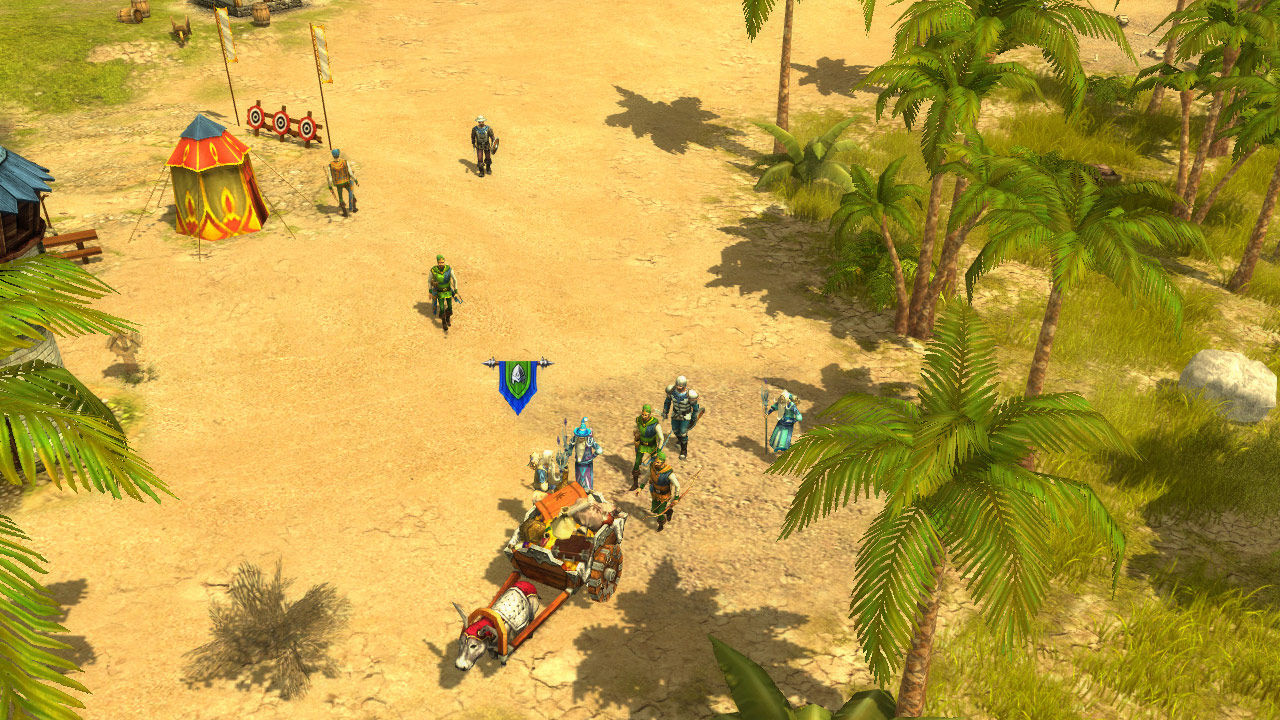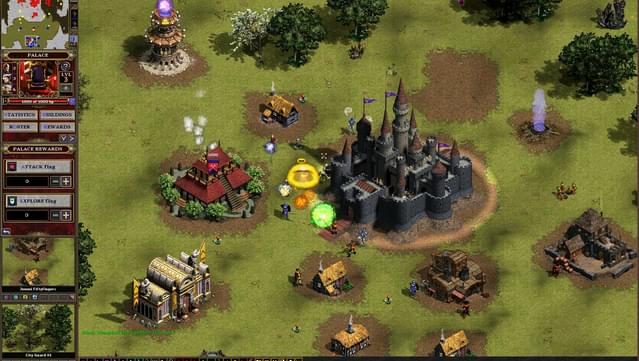| Majestic | |
|---|---|
| Developer(s) | Anim-X |
| Publisher(s) | Electronic Arts |
| Platform(s) | Microsoft Windows |
| Release | |
| Genre(s) | Alternate reality game |
Majestic was one of the first alternate reality games (ARGs), a type of game that blurs the line between in-game and out-of-game experiences. Majestic was created by Neil Young.[1][2] It debuted on July 31, 2001. While noted for its unusual concept, it did not fare well commercially.
“Majesty: The Fantasy Kingdom Sim” – the throne is waiting for its hero!Game Features:- Legendary indirect control strategy totally adapted for iOS- 10 types of heroes with dozens of statistics, weapons and armour- A dozen types of monsters- Several dozen spells- 30 upgradeable building types- 8 scenario missions+ a bonus one- 3. For Majesty: The Fantasy Kingdom Sim on the PC, GameFAQs has 16 cheat codes and secrets.

Majesty Game Cheats
Gameplay[edit]
Majestic was a science fictionthriller based on a Majestic 12 shadow government conspiracy theory. As an ARG, the game was played by phone, email, AOL Instant Messenger, BlackBerry messages, fax, and by visiting special websites. Gameplay frequently involved the player receiving clues that they would use to solve puzzles and unravel the story. All the messages were automated, with limited dialogue options, but AIM provided some interactive conversations. As an option to warn unsuspecting members in the same house you could enable a warning at the beginning of each phone call, and a small message on the top of all faxes. When this option was enabled, each phone call would begin with a woman saying 'This is a phone call from the video game Majestic', before the regular, prerecorded message. Some of the clues were videos featuring the game's cast. One of the more widely recognized actors was Joe Pantoliano, who portrayed Tim Pritchard in the game's final episode.
The game's tagline, 'It plays you', emphasized the nature of ARGs and the game's suspense. One of the first things the player experienced in Majestic was news that the game had stopped, yet they would receive messages suggesting that there was a conspiracy behind the stoppage. Majestic was said to have been inspired by The Game, a 1997 movie that featured something like an ARG which repeatedly confused the main character into thinking he was not playing. This game was also inspired by the 'Area 51 caller' on Art Bell's Coast to Coast AM.[3]
The game comprised five episodes: A pilot episode was free to try but the four remaining episodes required players to join EA.com's Platinum Service, which cost $9.95 USD per month.[4] EA discontinued Majestic on April 30, 2002 citing too few players.[5] There were 5 episodes per season. The game was cancelled before season 2 could be released.[6] Retail copies of the game included the game on CD-ROM, a copy of Internet Explorer and AIM, and some bonus music tracks in MP3 format. Also included was the first season's subscription.
The game's interface consisted of a small application named the 'Majestic Alliance Application', which served as both a 'friends list' (when playing for the first time, the game randomly selected other players who were at the same 'level' as player, in game progress, and added them to Majestic Alliance Application as 'allies', enabling players to send and receive instant messages to and from other players for help) and to stream music related to what web page or section of the game you were at. Different web pages and different parts of the game triggered different music. The music was broken down into multiple genres such as techno, industrial, and ambient. The game would choose an appropriate genre for a particular section, and stream it. The track played would be random. Certain sections of the game featured the same track, such as the music heard when logging into the game.

The game took place in real time. If a character said that they would contact the player the next day at a particular time, they would. The game was meant to be played casually. In order to keep a player from going through the game's entire content in one day, progress was limited each day. Once a player had accomplished the goals for the day, they were placed on 'Standby', in which no progress could be made until they were taken off 'Standby'.
Anim-X[edit]
Anim-X was the name of a fictional video game developer created by Electronic Arts as part of Majestic.[1]
Anim-X was represented In Majestic promotional videos by actors playing the company's two (fictional) lead developers, 'Brian Cale' and 'Mike Griffin'.
The story of the game begins with Cale's death and the destruction of the Anim-X offices. Players then received an email from EA regarding the official shutdown of Majestic's servers. Of course, the shutdown is only part of the game's fictional storyline and the game progresses, with players helping the surviving Anim-X employees to unravel the conspiracies surrounding the game.[7]
Reception[edit]
| Publication | Score |
|---|---|
| Computer Games Magazine | [8] |
| The Electric Playground | 6/10[9] |
.jpg)
Majestic was a commercial failure.[10]
Majestic was recognized as the 'Best Original Game' at E3 in 2001 and one of the five 'Game Innovation Spotlights' at the Game Developers Choice Awards in 2002. IGN questioned some of the suspension of disbelief required by the plot, but praised the ambition of the game, and the large potential it had and scored it 7.5/10.[11]
The editors of PC Gamer US awarded Majestic their 2001 'Most Innovative' prize, and wrote: 'When the concepts Majestic pioneered are rekindled in the future, we'll remember it for inspiring a new direction for game developers'.[12]The Electric Playground and the Academy of Interactive Arts & Sciences nominated Majestic for their 2001 'Most Innovative Game of the Year' and 'Innovation in Computer Gaming' awards, but these went to Grand Theft Auto III and Black & White, respectively.[13][14][15]
References[edit]
- ^ abThe Game Archaeologist: EA's MajesticArchived 2013-06-27 at the Wayback Machine, www.engadget.com
- ^Marriott, Michel (2001-08-23). 'Game Designer Who Breaks the Mold'. The New York Times. ISSN0362-4331. Retrieved 2017-11-19.
- ^Brown, Janelle (2001-08-10). 'Salon.com Technology | Paranoia for fun and profit'. Archive.salon.com. Retrieved 2013-03-04.
- ^Walker, Trey (2001-09-12). 'Majestic suspended'. GameSpot.com. Archived from the original on 2015-01-30. Retrieved 2013-03-04.
- ^Kushner, David (2002-03-07). 'So What, Exactly, Do Online Gamers Want?'. New York Times. Retrieved 2013-03-04.
- ^Walker, Trey (2001-07-31). 'No second chance for Majestic'. GameSpot.com. Archived from the original on 2015-01-30. Retrieved 2013-03-04.
- ^Szulborski, Dave (2005). This is Not a Game: A Guide to Alternate Reality Gaming. ISBN9781411625952.
- ^Chick, Tom (November 28, 2001). 'Majestic'. Computer Games Magazine. Archived from the original on August 9, 2004. Retrieved March 22, 2020.
- ^Reaume, Paula (August 16, 2001). 'The Longest Journey'. The Electric Playground. Archived from the original on October 23, 2003. Retrieved March 22, 2020.
- ^'Innovation at risk?'. www.money.cnn.com. December 19, 2001. Archived from the original on 2004-02-15.
- ^'Majestic'. IGN.
- ^Staff (March 2002). 'The Eighth Annual PC Gamer Awards'. PC Gamer US. 9 (3): 32, 33, 36, 36, 37, 40, 42.
- ^Staff. 'Blister Awards 2001'. The Electric Playground. Archived from the original on October 13, 2003. Retrieved March 22, 2020.
- ^'Academy of Interactive Arts and Sciences Announces Finalists for the 5th Annual Interactive Achievement Awards' (Press release). Los Angeles: Academy of Interactive Arts & Sciences. February 5, 2002. Archived from the original on June 2, 2002.
- ^'Academy of Interactive Arts and Sciences Announces Recipients of Fifth Annual Interactive Achievement Awards' (Press release). Las Vegas: Academy of Interactive Arts & Sciences. March 1, 2002. Archived from the original on March 6, 2002.
External links[edit]
Bullfrog's Dungeon Keeper 2 set a new standard in strategy gaming. Although it offered excellent graphics and gameplay, the greatest satisfaction came from the manipulation element. It was the knowing, or rather hoping, that would-be heroes in your dungeon would react to the obstacles you had deliberately set up for them that provided the sort of fun Cyberlore Studios is hoping to recreate with Majesty.
Cyberlore has a good pedigree, having coded expansion packs for Warcraft 2: Beyond the Dark Portal and Heroes of M&M, and they're hoping for another smash with a game that promises to give you a similar sense of control to the fabulous DKII.
Proclaiming itself as a 'fantasy kingdom sim', the game instates you as monarch of a small society, in which the decisions you make affect your subjects and realm. It's up to you to build the sort of city that will entice the greatest heroes of the land, who each possess individual character traits. There will be 18 different hero classes, including Warriors, Rangers and Wizards, and all of these will be able to gain experience from relevant acts. Once they've arrived, it's up to you to provide the resources and the entertainment to keep them there. Guilds, shops, libraries, taverns and markets will have to be put in place, to stop the visitors from getting disillusioned and wandering off to ply their trade in another town.

Resource management will also play a major role in the game. Town building isn't cheap and must be funded through a taxation system. And, when your domain starts to expand beyond the boundaries of your kingdom, you'll have to go looking for other places in which to build. This is the reason why your town needs to be so welcoming to heroes - without plenty of these you're not going to have much joy expanding.
Although Majesty doesn't allow direct control of NPCs, you can use other methods to get your own way. If new regions are needed in order to expand your city, but happen to be infested by evil creatures, rewards can be offered to any adventurer(s) brave enough to attempt purging the land of their presence. Likewise, this can be done to eliminate any enemies you may have made along the way, or have just taken a general disliking to.
In all, Majesty will feature 32 different nasties, ranging from the meek to the type which stimulates loss of bladder control. Because you can't fight these directly, you have to make sure your town is strong enough to withstand any onslaught. Build barricades and any passing heroes will man them and repel the evil forces. Alternatively, you can cast magic - the only way you directly influence proceedings - and save your skin the beardy-weirdy way.
The game features three modes of play: freestyle, Epic Quests and head-to-head multiplayer. The first allows customisation of game parameters, such as enemy strength and terrain type, with play continuing until the given quest is completed. Epic Quests will feature a succession of 29 challenges, where completion of one will lead onto the next. Multiplayer mode will provide the option of head-to-head or alliance play between two or more players.Majesty has the potential to appeal to lovers of Dungeon Keeper and no doubt to Civilization fans as well.
The broad scope allowed by both the real-time strategy and role-playing elements will give it a large potential audience. If it succeeds in melding the two genres successfully, it could be in for a long and happy reign.